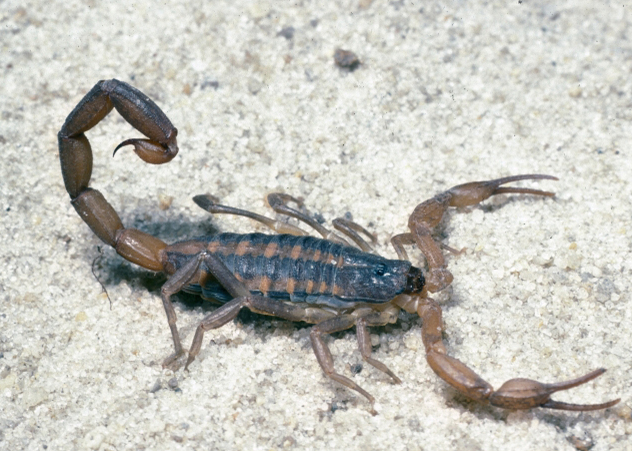Scorpions
Buthidae; Luridae; Vaejovidae
Identification
- long, thin segmented bodies
- long tails equipped with stingers
- eight legs and pincer-like mouthparts
- glow a fluorescent green/blue color under black light
Nesting Habits
- spend the day resting underneath objects on the ground and come out at night to search for prey
- seek dark protected areas to hide indoors
Diet
- small arthropods
Significance
- venom may cause swelling, inflammation, discoloration and pain
- most scorpion stings are similar to bee or wasp stings
- the only deadly scorpion in Utah is the Arizona bark scorpion, found only in southern Utah along the Colorado River
IPM Recommendations
- Anyone stung by a scorpion should collect the scorpion and immediately contact a physician or the poison control center for medical instructions.
- If scorpions are suspected in or around a structure, conduct a systematic inspection at night using a black light.
- Find and seal any openings or crevices in exterior walls.
- Repair leaky air conditioners or other outside water sources.
- Prune trees and shrubs up and away from the ground.
- Remove leaf litter, large mulch, debris and other harborage around buildings.
- Install tight-fitting screens and weather stripping around windows and doors.
For more information, see our Scorpions fact sheet.




